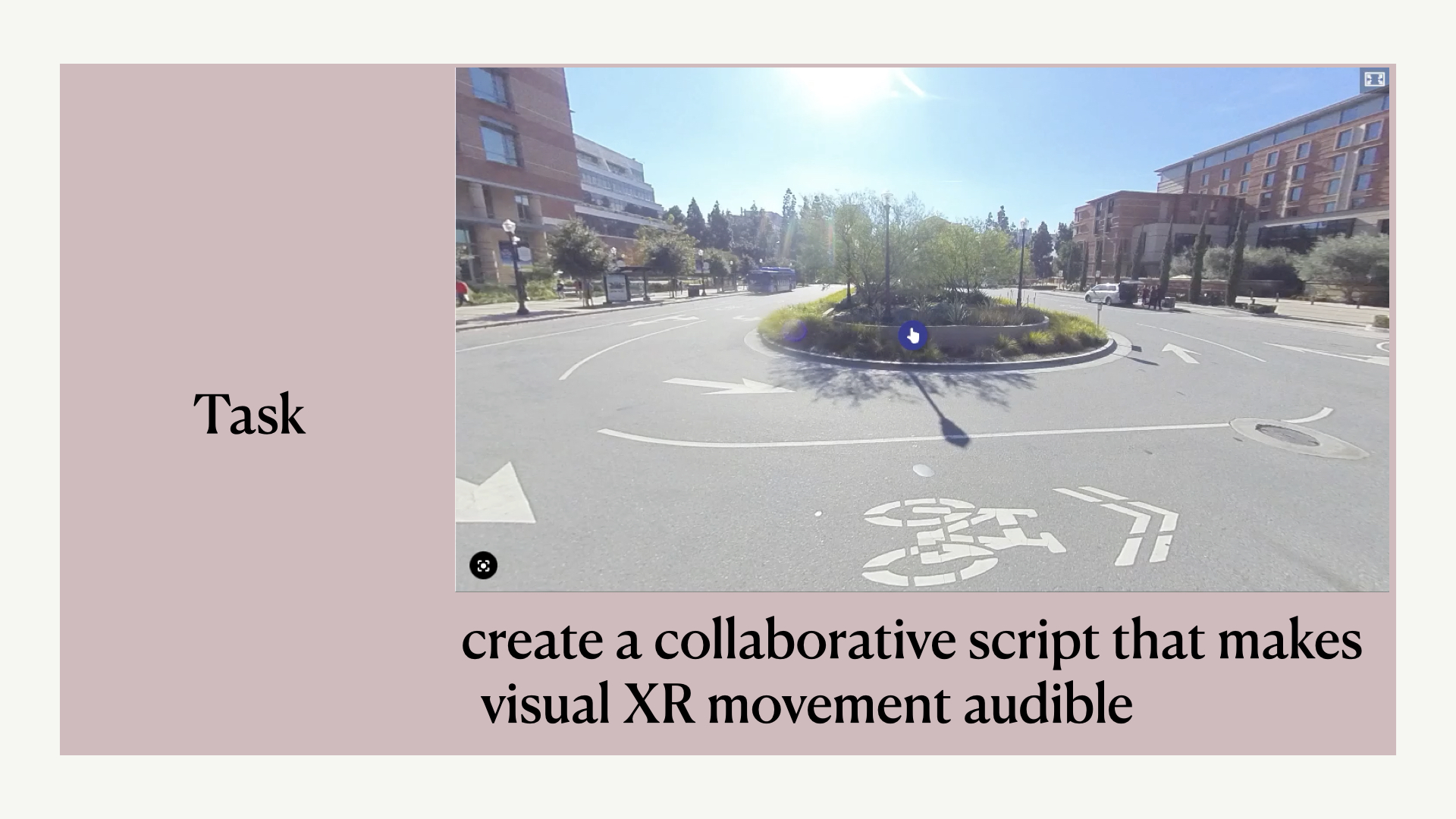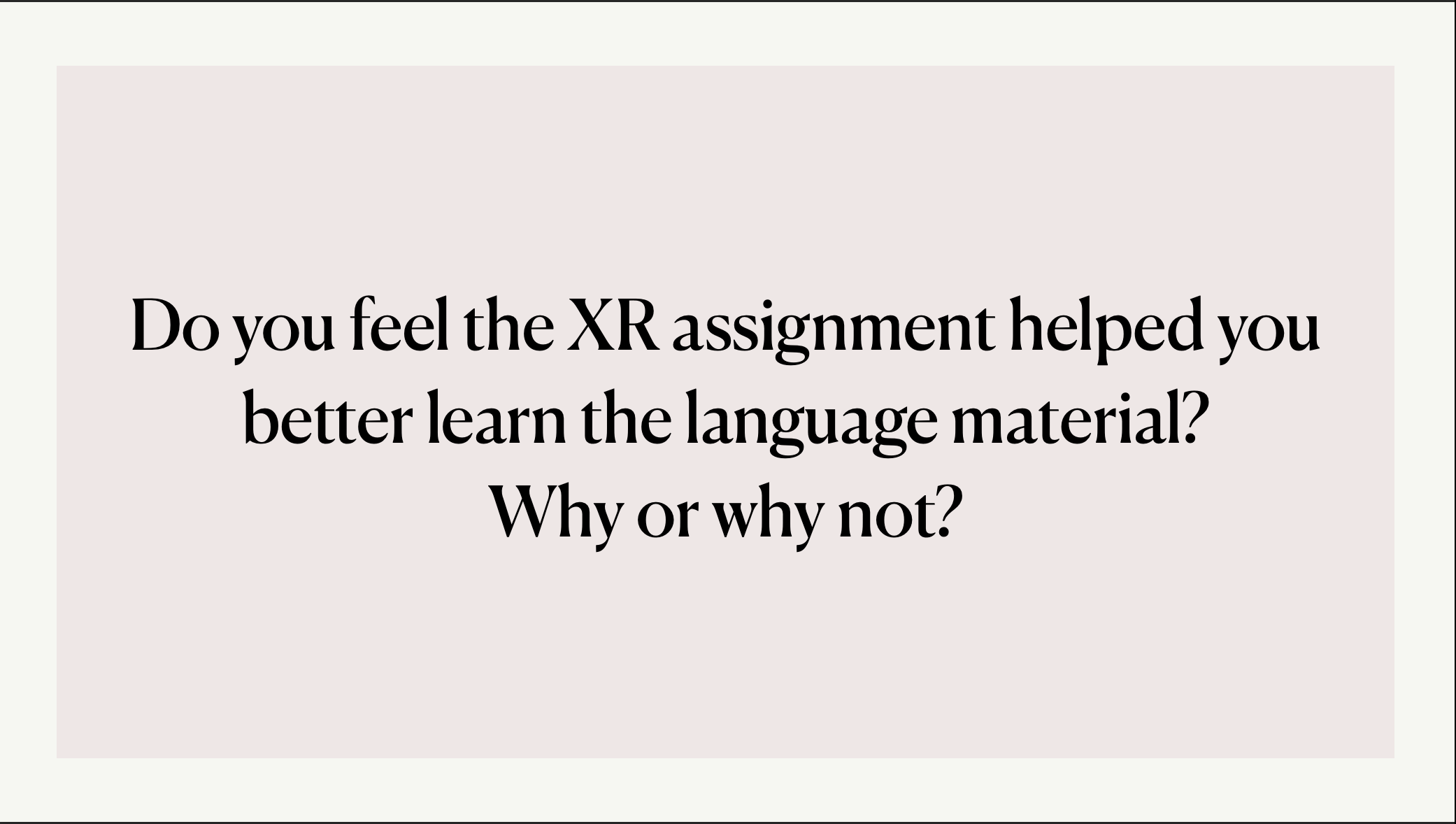Learning language with extended reality
This project occured at the University of California, Los Angeles with the assistance of Dr. Claire Lavagnino (Department of Italian) and Tom Garbelotti (HumTech).
︎︎︎
We acknowledge the Gabrielino/Tongva peoples as the traditional land caretakers of Tovaangar (the Los Angeles basin and So. Channel Islands). As a land grant institution, We pay our respects to the Honuukvetam (Ancestors), ‘Ahiihirom (Elders) and ‘Eyoohiinkem (our relatives/relations) past, present and emerging.
︎︎︎
Project findings were copresented during the Southwest Association for Language Learning Technology (SWALLT) 2020 conference. SWALLT is a regional group of the International Association for Language Learning Technology (IALLT).
︎︎︎
The foundation of language learning is confidence.

We utilize extended reality to affirm students in their abilities and allow them the chance to practice their knowledge in a low-risk, simulated virtual environment.
The assignment was to write content based on immersive 360 degree videos captured on UCLA’s campus. Students collaboratively worked to create a dialogue that incorporates structures such as prepositions, present tense verbs, as well as the vocabulary introduced throughout the quarter.
Students transformed their compositions into “scripts” to create, record, and share content alongside the immersive videos. This project provided an opportunity for students to synthesize course content and communicate how they are thinking in a target language.
Learning language, not translating language.
The use of online translators to complete any assignment, especially compositions, was strictly prohibited. If the coursebook vocabulary was not sufficient, students were to use a dictionary to look up a single noun, adjective, adverb or verb. Online translators suppress a student’s creativity and ability to think analytically. For example, when using an online translation, the context of the word is not always considered. Example: there are 2 different ways to say “to play” in Italian—giocare (to play a sport or game) and suonare (to play an instrument). As of 2021, the online translator is not adequately prepared to provide the appropriate context.
Critical Reflections

Following the course, students submitted critical reflections on the use of extended reality tools in the language classroom.
For findings and further information regarding tools and techniques, kindly contact me.